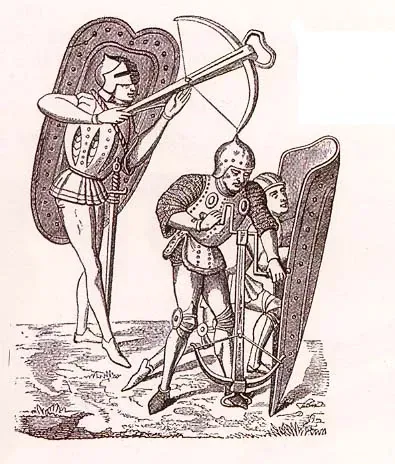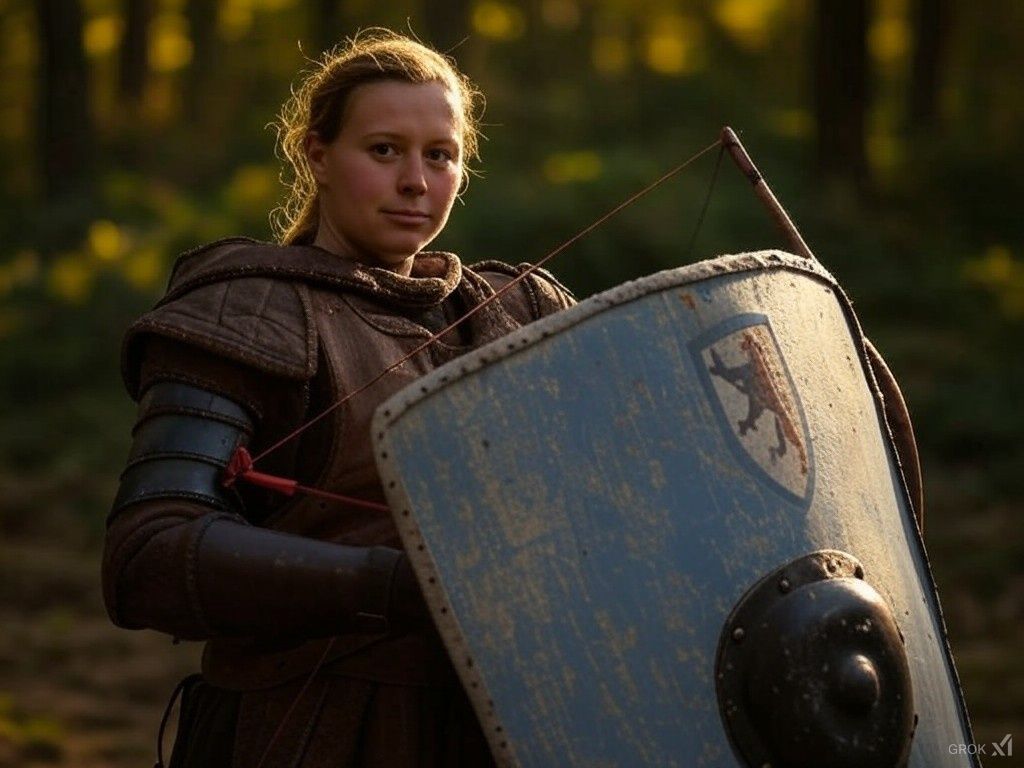What is the Pavese Shield?
In the vast stage of the Middle Ages, the Pavés Shield stood out as an essential piece of personal protection, specifically designed to meet the defensive needs of crossbowmen and other combatants on the battlefield. This type of shield was not only a technological innovation but also a product of its time and the political and military conditions that shaped it.
Origin and Description
The Pavés Shield emerged as a direct response to the military tactics observed during the Battle of Crécy, which took place on August 26, 1346, amid the Hundred Years' War between England and France. During this conflict, the Genoese crossbowmen in service of the French king were overwhelmed and annihilated by the volleys of English longbowmen. This experience revealed the vulnerability of crossbowmen during the reloading of their weapons, prompting the creation of a shield that would provide adequate protection.

The Pavés Shield was a large and robust shield, designed to cover almost the entire body of the soldier, providing complete defense against enemy projectiles. It typically had an oblong shape and could resemble a portion of a cylinder or elongated cone. This shape allowed soldiers to use it as a secure shelter while reloading their crossbows or performing other defensive actions.
Features
Among the most notable features of the Pavés Shield are:
- Material: Made of hardened wood with leather, it offered a combination of protection and durability.
- Decoration: Frequently decorated with heraldic motifs, representing the colors and symbols of the lord or military leader to whom they belonged. Some examples also displayed religious motifs or royal coats of arms.
- Functionality: Provided excellent resistance not only against arrows and other projectiles but also against cavalry charges, continuing the tradition of infantry defense against heavily armored horse forces.
Use and Functionality
The pavés played an integral role in the protection of crossbowmen, especially during the reloading of their weapons. It was designed to offer safe coverage that prevented damage while combatants prepared for their next shot. Additionally, its utility extended to other defensive functions on the battlefield, being vital against cavalry charges.
Decoration and Utilization
Beyond its defensive capabilities, the Pavés Shield was a symbol of identity and affiliation. Its decoration, which could include the colors of the mercenary company or the lineage of the owner, added a visual element of prestige and belonging. Some models featured religious adornments, projecting not only military power but also the spirituality and divine patronage sought by medieval warriors.
Historical Transition
By the late 15th century, tactical and technological changes on the battlefield led to the replacement of the Pavés Shield by more suitable units, such as pikemen. However, its use persisted in maritime scenarios during the 16th and 17th centuries, serving as protection in shipboard combat.

The resilience and versatility of the Pavés Shield are testaments to its importance in military history. This shield symbolizes not only the adaptability of medieval battle tactics but also an era in history where each innovation had a significant impact on the fate of nations and their armies.




























